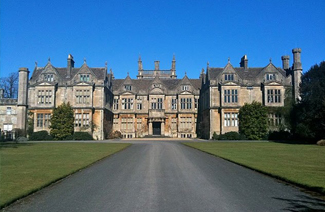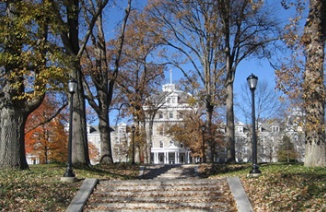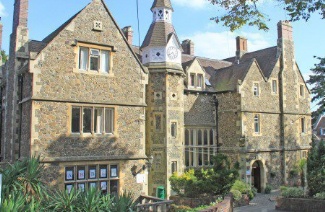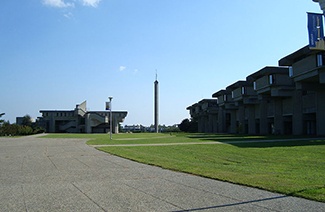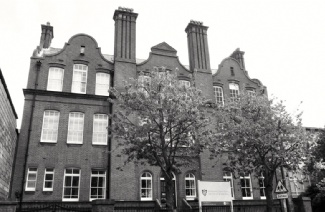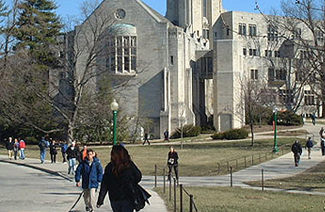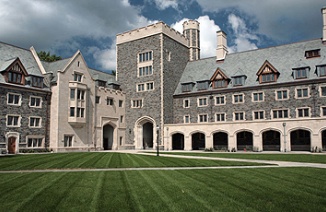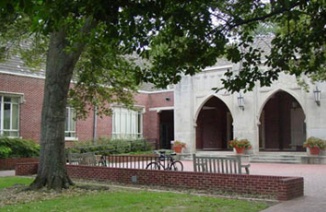2017年2月25日的雅思考试就要来了,为了便于大家在考前进行充分的准备,2017年2月25日雅思阅读预测【小范围】。网会在雅思考前为大家带来
点击》》
网为大家整理了2017年2月25日雅思阅读预测【小范围】重点阅读题目,一起来了解一下:
奥林匹克火炬 Torch Relay
威廉.吉尔伯特与磁场学 William Gilbert and Magnetism
游记Travel Accounts
艺术家的指纹Artist’s Fingerprints
澳洲考拉Kolas
鸟类迁徙 Bird Migration
莫尔斯电码 Morse Code
管理学之父 Father of Modern Management
噪音 The Effects of Living In Noisy World
植物芬芳 Plant Scents
石油经济的衰退Sunset for Oil Business
梯水井Stepwells
为了便于大家对这些题目的阅读文章进行了解,本文小编为大家带来了梯水井Stepwells阅读原文及答案解析,一起来了解一下:
A millennium ago, stepwells were fundamental to life in the driest parts of India. Richard Cox travelled to north-western India to document these spectacular monuments from a bygone era
During the sixth and seventh centuries, the inhabitants of the modern-day states of Gujarat and Rajasthan in north-western India developed a method of gaining access to clean, fresh groundwater during the dry season for drinking, bathing, watering animals and irrigation. However, the significance of this invention — the stepwell — goes beyond its utilitarian application.
Unique to this region, stepwells are often architecturally complex and vary widely in size and shape. During their heyday, they were places of gathering, of leisure and relaxation and of worship for villagers of all but the lowest classes. Most stepwells are found dotted round the desert areas of Gujarat (where they are called vav) and Rajasthan (where they are called baori), while a few also survive in Delhi. Some were located in or near villages as public spaces for the community; others were positioned beside roads as resting places for travellers.
As their name suggests, stepwells comprise a series of stone steps descending from ground level to the water source (normally an underground aquifer) as it recedes following the rains. When the water level was high, the user needed only to descend a few steps to reach it; when it was low, several levels would have to be negotiated.
Some wells are vast, open craters with hundreds of steps paving each sloping side, often in tiers. Others are more elaborate, with long stepped passages leading to the water via several storeys. Built from stone and supported by pillars, they also included pavilions that sheltered visitors from the relentless heat. But perhaps the most impressive features are the intricate decorative sculptures that embellish many stepwells, showing activities from fighting and dancing to everyday acts such as women combing their hair or churning butter.
Down the centuries, thousands of wells were constructed throughout north?western India, but the majority have now fallen into disuse; many are derelict and dry, as groundwater has been diverted for industrial use and the wells no longer reach the water table. Their condition hasn’t been helped by recent dry spells: southern Rajasthan suffered an eight-year drought between 1996 and 2004.
However, some important sites in Gujarat have recently undergone major restoration, and the state government announced in June last year that it plans to restore the stepwells throughout the state.
In Patan, the state’s ancient capital, the stepwell of Rani Ki Vav (Queen’s Stepwell) is perhaps the finest current example. It was built by Queen Udayamati during the late 11th century, but became silted up following a flood during the 13th century. But the Archaeological Survey of India began restoring it in the 1960s, and today it is in pristine condition. At 65 metres long, 20 metres wide and 27 metres deep, Rani Ki Vav features 500 sculptures carved into niches throughout the monument. Incredibly, in January 2001, this ancient structure survived an earthquake that measured 7.6 on the Richter scale.
Another example is the Surya Kund in Modhera, northern Gujarat, next to the Sun Temple, built by King Bhima I in 1026 to honour the sun god Surya. It actually resembles a tank (kund means reservoir or pond) rather than a well, but displays the hallmarks of stepwell architecture, including four sides of steps that descend to the bottom in a stunning geometrical formation. The terraces house 108 small, intricately carved shrines between the sets of steps.
Rajasthan also has a wealth of wells. The ancient city of Bundi, 200 kilometres south of Jaipur, is renowned for its architecture, including its stepwells.
One of the larger examples is Raniji Ki Baori,which was built by the queen of the region, Nathavatji, in 1699. At 46 metres deep, 20 metres wide and 40 metres long, the intricately carved monument is one of 21 baoris commissioned in the Bundi area by Nathavatji.
In the old ruined town of Abhaneri, about 95 kilometres east of Jaipur, is Chand Baori, one of India’s oldest and deepest wells; aesthetically it’s perhaps one of the most dramatic. Built in around 850 AD next to the temple of Harshat Mata, the baori comprises hundreds of zigzagging steps that run along three of its sides, steeply descending 11 storeys, resulting in a striking pattern when seen from afar. On the fourth side, verandas which are supported by ornate pillars overlook the steps.
Still in public use is Neemrana Ki Baori, located just off the Jaipur-Delhi highway. Constructed in around 1700, it is nine storeys deep, with the last two being underwater. At ground level, there are 86 colonnaded openings from where the visitor descends 170 steps to the deepest water source.
Today, following years of neglect, many of these monuments to medieval engineering have been saved by the Archaeological Survey of India, which has recognised the importance of preserving them as part of the country’s rich history. Tourists flock to wells in far-flung corners of north?-western India to gaze in wonder at these architectural marvels from hundreds of years ago, which serve as a reminder of both the ingenuity and artistry of ancient civilisations and of the value of water to human existence.
Questions 1-5
Do the following statements agree with the information given in Reading Passage 1?
In boxes 1-5 on your answer sheet, write
TRUE if the statement agrees with the information
FALSE if the statement contradicts the information
NOT GIVEN if there is no information on this
1 Examples of ancient stepwells can be found all over the world.
2 Stepwells had a range of functions, in addition to those related to water collection.
3 The few existing stepwells in Delhi are more attractive than those found elsewhere.
4 It took workers many years to build the stone steps characteristic of stepwells.
5 The number of steps above the water level in a stepwell altered during the course of a year.
Questions 6-8
Answer the questions below.
Choose ONE WORD ONLY from the passage for each answer.
Write your answers in boxes 6-8 on your answer sheet
6 Which part of some stepwells provided shade for people?
7 What type of serious climatic event, which took place in southern Rajasthan, is mentioned in the article?
8 Who are frequent visitors to stepwells nowadays?
Questions 9-13
Complete the table below.
Choose ONE WORD AND/OR A NUMBER from the passage for each answer. Write your answers in boxes 9-13 on your answer sheet
Stepwell Date Features Other notes
Rani Ki Vav Late
11th
century As many as 500 sculptures decorate the monument Restored in the 1960s
Excellent condition, despite the 9 _______ of 2001
Surya Kund 1026 Steps on the
10 ______ produce a
geometrical pattern
Carved shrines Looks more like a 11 _______than a well
Raniji Ki Baori 1699 Intricately carved monument One of 21 baoris in the area commissioned by Queen Nathavatji
Chand Baori 850 AD Steps take you down 11 storeys to the bottom Old, deep and very dramatic
Has 12 _____ which
provide a view of the steps
Neemrana Ki Baori 1700 Has two 13 ______
levels Used by public today
为了方便大家了解自己的做题情况,网为大家准备了本篇阅读题目的答案解析,一起来看看:
Question 1
参考译文:古老阶梯水井的例子在全世界范围内都能发现。
难度及答案:难度低;答案为FALSE
关键词: all over the world
定位原文: 第2段第1句“Unique to this region... ”阶梯水并是这个地区独有的。
解题思路: 原文说阶梯水井是这个地区独有的,题目说全世界都有,所以答案为FALSE。
Question 2
参考译文:除了收集水资源以外,阶梯水井达有很多功能。
难度及答案:难度低;答案为TRUE
关键词: functions
定位原文: 第2段第2句“During their heyday... ”在它们的全盛期,它们是聚集的场所, 是娱乐放松的场所,是除了底层阶级以外村民拜神的场所。
解题思路: 原文中介绍了很多功能,比如娱乐,所以答案为TRUE。
Question 3
参考译文: 德里(Delhi)现存的阶梯水井比其他地区发现的水井更具有吸引力。
难度及答案:难度低;答案为NOT GIVEN
关键词: Delhi
定位原文: 第2段第3句“Most stepwells…”大多数的阶梯水井被发现散落在吉拉特邦(他们称之为vov)和拉贾斯坦邦(他们称之为baori)的沙漠地带,还有少量的在德里发现。
解题思路:原文并没有对它们的吸引力做出比较,所以答案为not given。
Question 4
参考译文:工人们需要花费很多年才能够建设阶梯特色的水井。
难度及答案:难度低;答案为NOT GIVEN
关键词: workers
对应原文: 原文中没有备到关键词。
解题思路: 原文完全未提及,所以答案为NOT GIVEN。
Question 5
参考译文:一年当中,阶梯水井中露出水面的阶梯数目是会触变化的。
难度及答案:难度低;答案为TRUE
关键词: alter、course of a year
定位原文: 第3段第1句“As their name…”就像他们的名字所说的,阶梯水井由一系列 的石头台阶组成,这些石阶从地面下降到水源(通常是一个地下蓄水层),因为它随着雨水后退。
解题思路: 原文中说,下雨的话,石阶会发生变化。由文中得知,这个变化也就是在石阶露出水面多少。后面一句话也可以看出有变化。When the water level...水面高的时候,取水的人只需要往下走几个台阶就好。
Question 6
参考译文: 一些阶梯水井的哪个部分可以为人们提供阴凉?
难度及答案: 难度低;答案为 pavilions
关键词: shade
定位原文: 第4段第3句“Built from…pavilions that sheltered visitors… ”由石头建造,梁柱支撑,其中还包括亭子,使得拜访者免受无情高温的炙烤。
解题思路: 原文中shelter可以为人们提供shade,所以答案为pavilions。
Question 7
参考译文: 文章中提到了在Rajasthan南部发生了哪一种恶劣的气候现象?
难度及答案:难度低;答案为drought
关键词: Rajasthan
定位原文: 第5段最后一句“Their condition... ”它们的状况并没有因近期的干旱期得以改善:拉贾斯坦邦的南部在1996年和2004年遭受了长达八年的干旱。
解题思路: 原文中的suffered (经历)替换了题目中的took place。
Question 8
参考译文: 现如今经常拜访阶梯水井的人群是谁?
难度及答案: 难度中等;答案为tourists
关键词: visitors、nowadays
定位原文: 最后1段第2句“Tourists flock to... ”旅行者们蜂拥而至印度西北遥远的角落里的水井,在惊奇中去凝视这些百年前的建筑传奇,这些传奇起着古老文明独创性和艺术性的暗示作用,也提醒着水对于人类生存的价值。
解题思路: 原文中这一段第一个词就是today, 所以是近期;原文中flock to “蜂拥而去” 对应着 frequent visitors。
Question 9
参考译文: Rani Ki Vav状态很好,尽管2001年有____.
难度及答案: 难度低;答案为earthquake
关键词: 2001
定位原文: 第7段最后一句“Incredibly...”难以置信的是,在2001年1月,这座古老的建筑在里氏震级7.6级的地震中得以保全。
解题思路: 所以原文说尽管2001年有地震,它的状况仍很好。
Question 10
参考译文:Surya Kund ___的台阶产生了一种几何模式。
难度及答案: 难度中等;答案为4/four sides
关键词: 1026 ; geometrical pattern
定位原文: 第8段第2句“lt actually... ”实际上它更像一个池塘(kund的意思是蓄水池 池塘)而不是一个水井,但是却展现了阶梯水井建筑的特点,包括它的四面部有通向底部的极好的几何学构造的台阶。
解题思路: 根据geometrical pattern可以定位在这—句,根据steps on 可以定位到 including four sides of steps,所以答案为 4/four sides。
Question 11
参考译文: Surya Kund与井比起来,看起来更加像____
难度及答案: 难度低;答案为tank
关键词: 1026, looks like
定位原文: 同第10题.
解题思路: 原文中resembles与题目中的looks like属于同义替换。
Question 12
参考译文: Chand Baori有___,它能够提供观看阶梯的视野。
难度及答案:难度中等;答案为verandas/verandahs
关键词: 850 AD 、 11 storeys、 provide a view of the steps
定位原文: 第10段最后一句“On the fourth side?. ”在第四面,由华丽的柱子支撑的游廊 可以俯瞰这些台阶。
解题思路: 原文中 overlook the steps 与题目中的 provide a view of the steps 属于同义替换。
Question 13
参考译文:Neemrana Ki Baori 有两个____层。
难度及答案: 难度低;答案为underwater
关键词: 1700、two
定位原文: 第11段第2句“Constructed in around 1700…”在大约1700年建造它有九层深,最后两层在水下。
解题思路: 找到了two,后面的underwater就是答案了。
以上是网为大家分享的2017年2月25日雅思阅读预测【小范围】,网雅思栏目会在第一时间为大家带来雅思考前预测,欢迎大家关注。

